Zanzibar is home to a fragile host of ecosystems that are the habitats of a number of amazing mammals, birds, reptiles and amphibians. A great number of these animals can only be found in this part of the world and the ecosystems that support them require extensive preservation efforts so that each one of these animals can continue to survive.
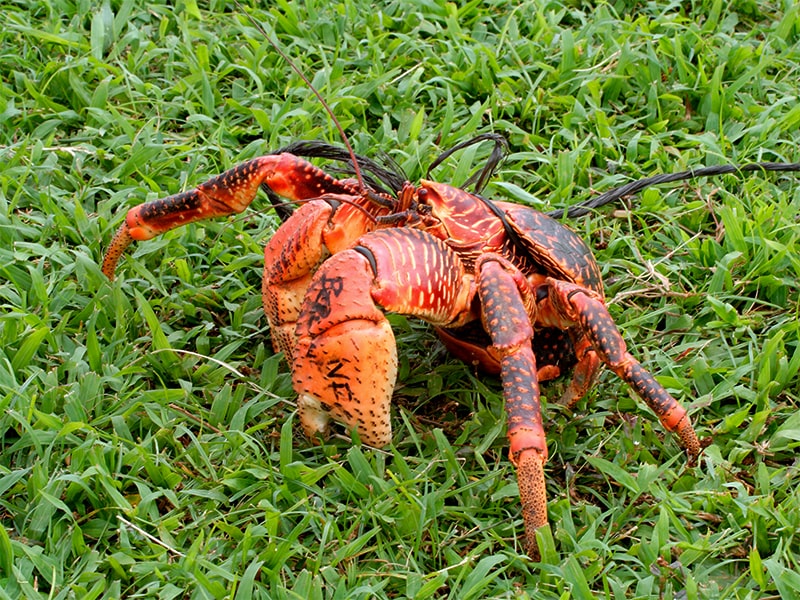
Coconut Crab
Coconut crabs are extremely large hermit crabs that are also known as palm seeds and robber crabs. This species of crab is one of the largest arthropods living on land in the world. In most cases they can grow up to 1 m in length and weigh around 9 pounds. They can be found throughout the Pacific Ocean and Zanzibar.
Coconut crabs have lungs instead of gills, allowing them to live on land comfortably without access to water. They are known for their amazing sense of smell, which helps them detect insects as well as food sources across the area. They live in small boroughs and carry food back to these boroughs for survival. Often they can be found digging through trash and dragging food, which is where they got the name ‘robber crabs’ from. These crabs can live for quite a long time, in some cases they can survive between 40 to 60 years. Although their population is starting to decline, as of today there are only a few conservation efforts ongoing worldwide. Coconut crabs are edible, but most places enact a catch limit to ensure that the crabs will not be hunted to extinction. Finding them is not too easy, especially with their nature of burrowing. In most cases, a catch limit of 3 to 5 is in place with a commercial license.
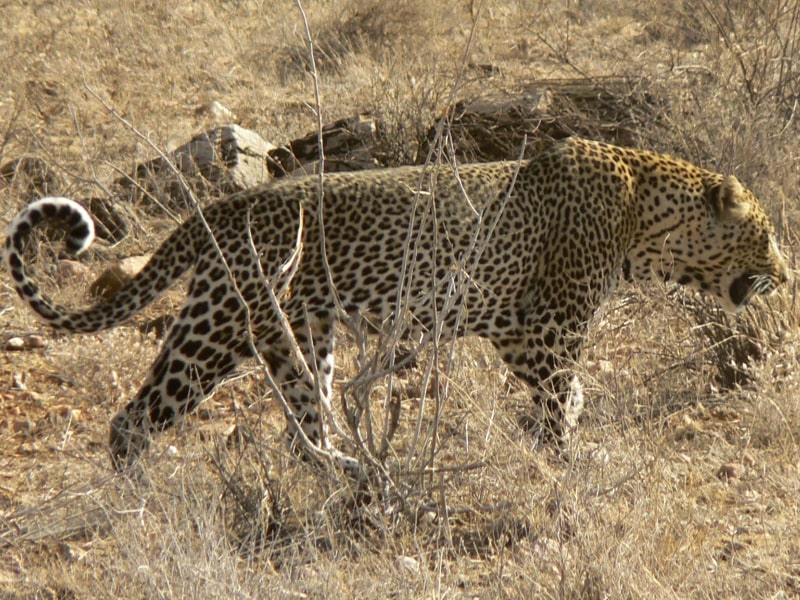
Wouter van Vliet from The Hague, The Netherlands [CC BY 2.0 (https://creativecommons.org/licenses/by/2.0)]
Zanzibar Leopard
Conservation efforts for the Zanzibar leopard have unfortunately ended, as the species was declared extinct in the mid-1990s. A number of authorities suggested that there may still be Zanzibar leopards alive, but there have been almost no sightings since 1995. The Zanzibar leopard is said to have evolved from the African leopard. The main problem that caused these leopards to become extinct was an ongoing conflict between local villagers and the big cats. At first, the leopards were regularly hunted for their pelts and later for the danger that they posed to people hunting in the wild. Because of the growth of agriculture and the human population on the island, eventually the leopards went extinct through hunting.
Although no leopards have been officially sighted since 1995, sometimes they are still accused of killing livestock in the area. Although no one knows for sure, there is a chance the island is still home to a small population of leopards.
Zanzibar leopards eventually grew so rare there are still only six skins and examples of the leopards kept in museums around the world. The species was first discovered in the year 1932, and they have never been officially studied in the wild by research teams.
The Zanzibar leopard remains a great loss to science, and one of the first animals that comes to mind when we think of the worst-case scenario on extinction for Zanzibar’s treasured animals.
Red Colobus Monkey
The Zanzibar red Colobus monkey is categorized as an endangered species. They are mostly located on the island of Unguja in Zanzibar, having been discovered by Sir John Kirk on this island. This monkey is now one of the focuses for conservation efforts in Zanzibar. As their population is still experiencing a steep decline, a number of conservation lists are working together to create a strategy that will preserve their habitat and ensure their future numbers.
The red colobus monkey was able to survive a major natural event when rising sea levels drove many of them inland causing them to evolve from their previous state. Their size is a little bit different from other species of colobus monkeys, and they often have much smaller heads due to limited food resources in the area. These monkeys are known for their red and black coats and their smaller size. They can generally grow up to a maximum of 12 kg and they do tend to give off a little bit of a stronger smell compared to other types of monkeys. This is why many locals call them ‘poison monkeys’ in Swahili.
These monkeys can be found in three different types of forests across the main island where they live. The government has enacted a number of protected zones including a 25 km² land reserve. Most of the time these monkeys live in small populations of four males and several females. A group of these monkeys will usually form a family consisting of between 30 to 50 animals.
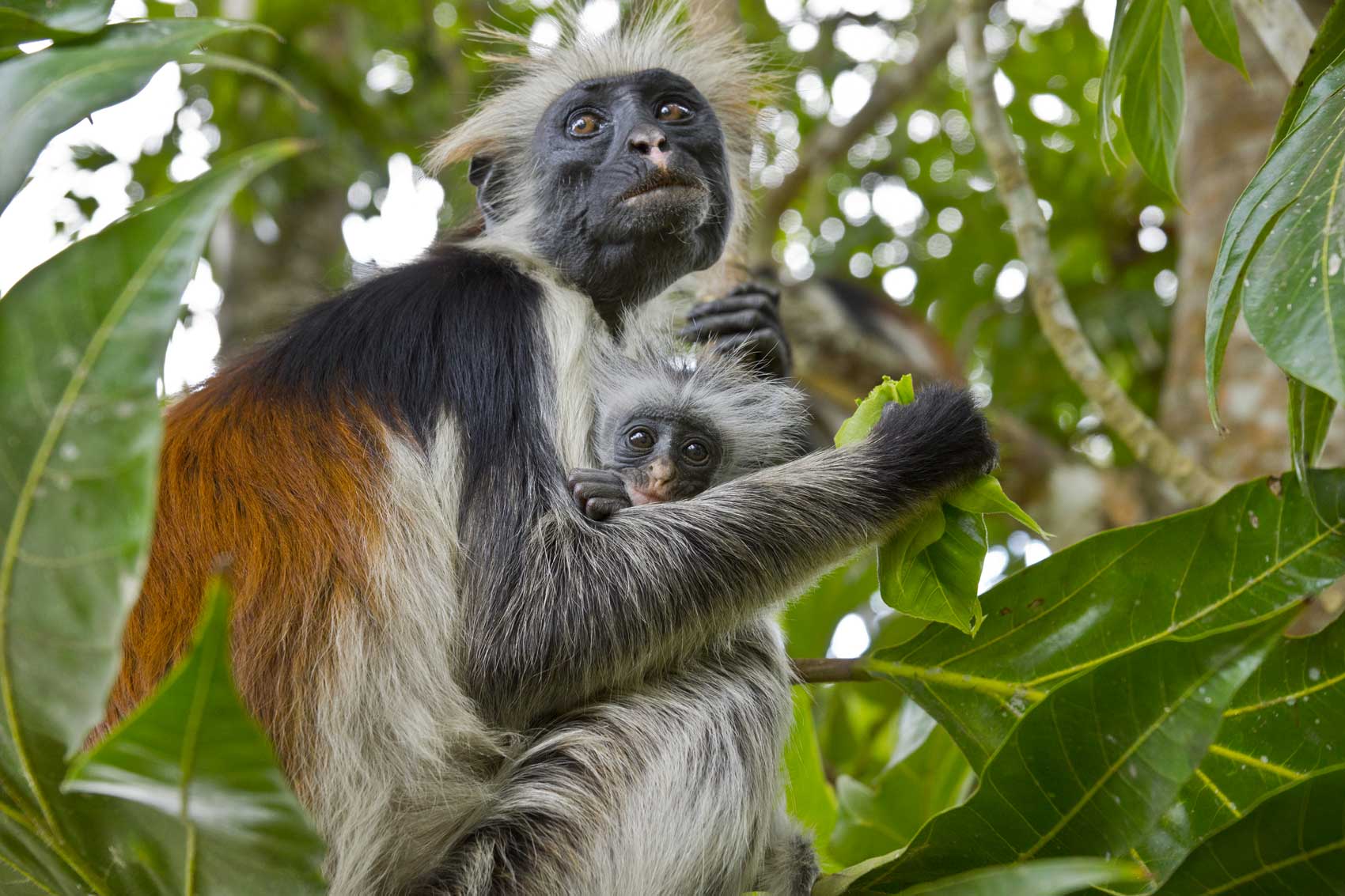
They mostly eat leaves, almonds, fruits, bark, deadwood, leaf shoots and more. During the dry season these monkeys often have to venture out of their protected zone, which puts them at risk of predators as well as becoming trapped without water or food in deforested zones. Efforts to prevent the extinction of this unique creature will continue in Zanzibar.
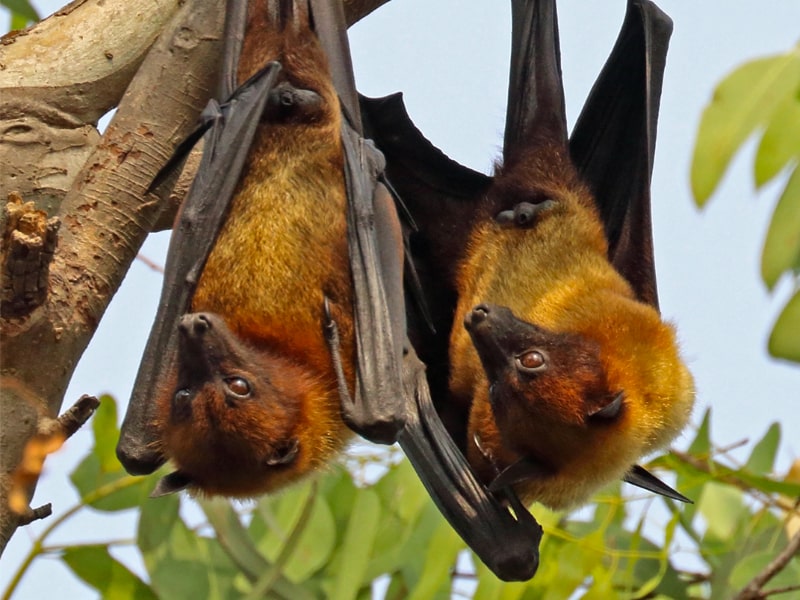
Charles J Sharp [CC BY-SA 4.0 (https://creativecommons.org/licenses/by-sa/4.0)]
Pemba Flying Fox
Pemba flying foxes are a threatened species that lives mostly in subtropical mangrove forests throughout Zanzibar. The Pemba flying fox is threatened because of changes to its environment, and the constant trimming of the trees that it lives in.
Flying foxes are one of the largest types of fruit bats in the world. Its face resembles a fox and has orange underfur that covers most of his body. Flying foxes can get as heavy as 650 gram and the wingspan can reach as long as 160cm or over 5 feet.
Most of these flying foxes live on the island of Pemba, which is just off the coast of Tanzania. They stay high up in trees and generally live in mangroves as well as in forests. Most locals will avoid disturbing these bats because of traditional beliefs. What is particularly unique about the colonies of these flying foxes is that up to 850 bats can be part of one roosting area.
Most of the time these animals will feast on mangoes, leaves, pollen, nectar and figs. Plant seeds will often pass through them and be dispersed to grow into new forests and plant areas.
This is a unique creature that is responsible for creating much of the forests and plant life in forest ecosystems.

Chameleon
Chameleons can be found throughout Zanzibar, one of the most common species is the Meller chameleon also known as the giant one-horned chameleon. This species came from the mainland of Africa and it is one of the largest chameleons in the world.
The species was found in 1865 and named after Meller who catalogued it. The first of these chameleons was found in Malawi, but they are also found in bushy areas throughout the islands of Tanzania and Zanzibar.
Generally the largest they get is around 24 inches. They are known for the various spots on their body. Their basic color is usually a deeper forest green with wide stripes, however, they can change colors to match their surroundings when they are threatened.
Chameleons of this type are carnivores, and they like to eat other smaller lizards, spiders, caterpillars, and other insects. The larger chameleons can also feast on some smaller birds. These types of chameleons tend to not do well in captivity as they require a consistent temperature in order to thrive. As further deforestation continues in green areas throughout Zanzibar, this chameleon could continue to see steep declines in their numbers.
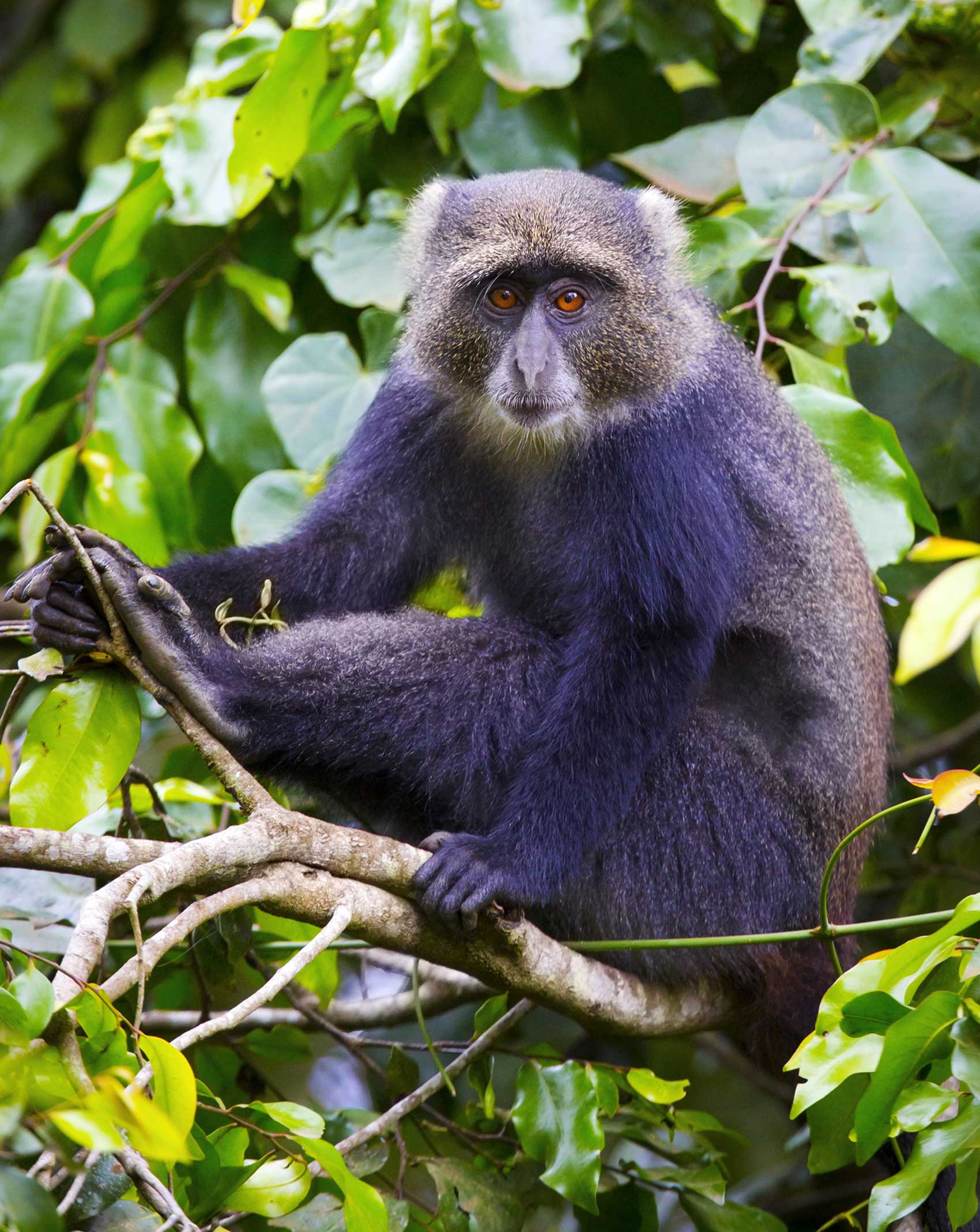
Blue Sykes’ Monkey
The blue Sykes’ monkey is also known as the White throated monkey and it can commonly be found throughout South Africa, Ethiopia, the Congo and in Zanzibar. The Zanzibar species is a subspecies which lives in treetops.
Their numbers are not threatened yet, even though their population is slowly decreasing. They mostly stick to grasslands, savannas, and mangrove forests, and they can eat a wide range of plants and animals.
They grow to a medium size for a primate of this type, and they require wooded areas with plenty of food in order to thrive. This monkey is known for its white patch on the throat as well as the upper chest and the blackish/blue cap which is where it got its name from.
The population of blue Sykes’ monkeys in Zanzibar are often threatened by the disappearing of plants and trees, and people destroying their habitats. They don’t have many enemies apart from mankind. While there is no ongoing conservation effort for these monkeys as they are still quite widespread, a conservation effort could be drafted soon as their numbers continue to decrease. Generally these monkeys can be quite skittish, but you may see one feeding in the treetops over the course of your stay in Zanzibar.
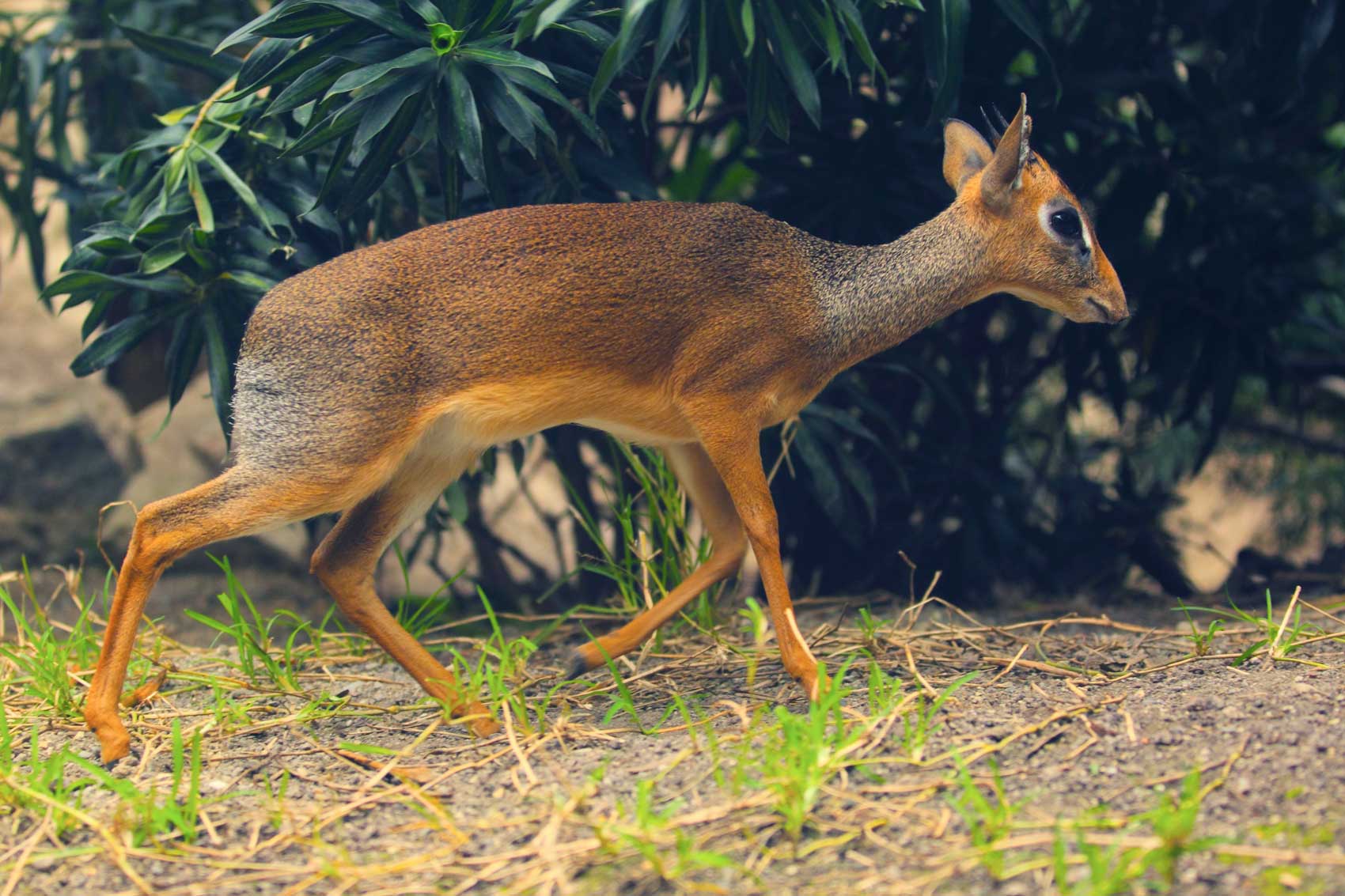
Aders’ Duiker
This threatened forest dwelling mammal resembles a small deer and can be found throughout the forests of Zanzibar and along the coast of Kenya. This animal remains critically endangered, and it’s estimated that there are only around 1400 left.
This animal stands around 30 cm tall and it can grow to a weight of around 17 pounds. The coat is generally a red to brown color and it can sometimes get a bit gray around the neck and back side. Its pronounced ears stick out at around 8 cm above the body, and they are able to detect predators from a long distance. They have small horns that stand at around 6 cm and a flat nose.
These mammals require extensive plant life in order to live comfortably. In Zanzibar they mostly live in tall thicket which grows on top of coral rag. The species is quite difficult to sneak up on as they are very sensitive to sound, so you often have to observe them from a distance.
They tend to feast on flowers, fruit and leaves that fell to the forest floor. They usually travel in small groups of two or three and they have been hunted excessively as well as driven out of their homes by development. They continue to be threatened by hunting, feral dogs and other predators, and many conservation plans are in place throughout Zanzibar to protect their numbers, which are continuing to fall.
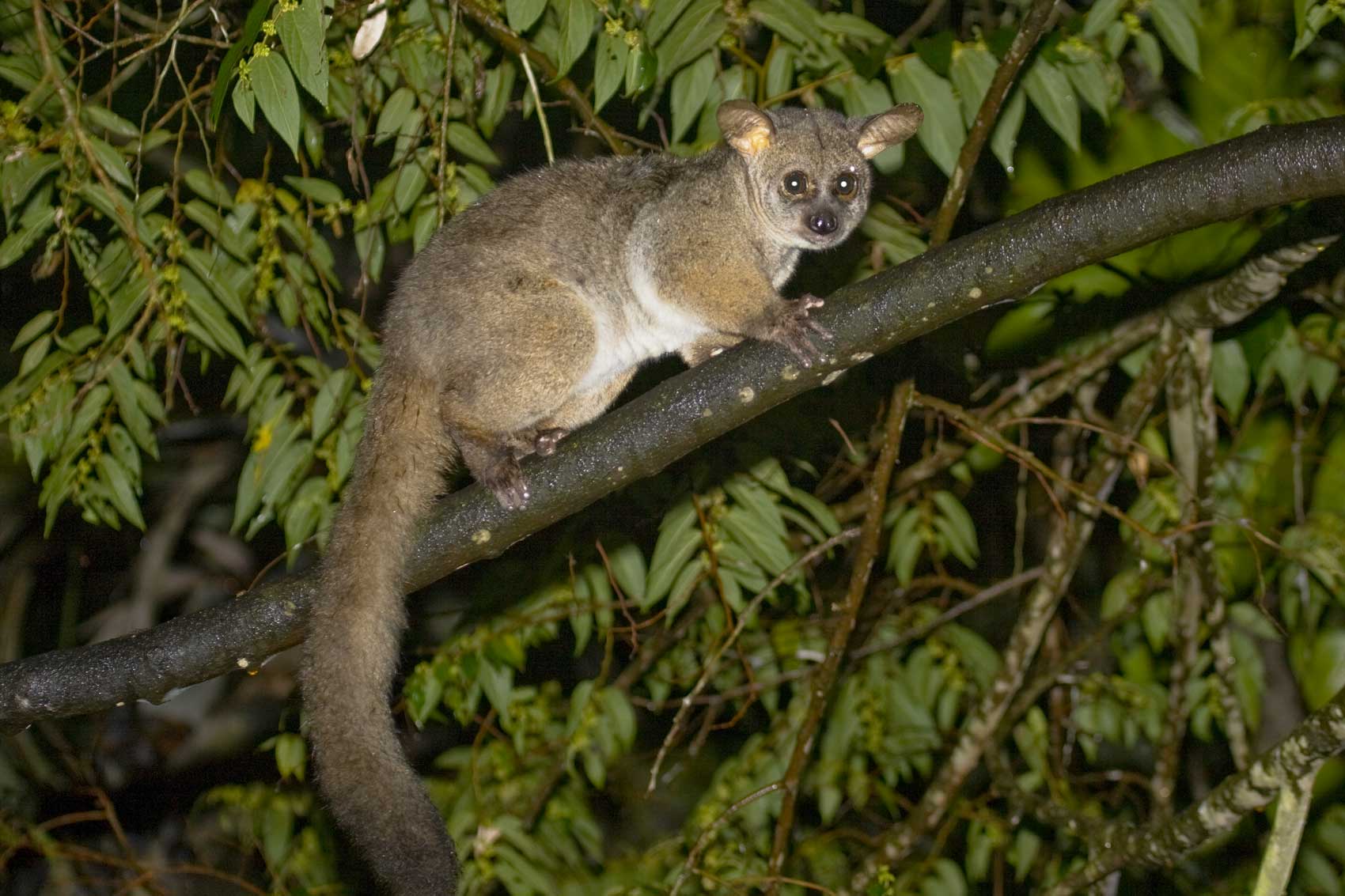
Bush Baby
Bush babies are also known as nagapies, Galagos and under a few other names. They are nocturnal primates that can be found throughout the trees across Africa and got their name from the type of cries it makes when threatened.
This animal can generally only be seen at night and are one of the most commonly found primates at night throughout Africa. They are known for their extremely large eyes, their great hearing as well as the strong tails and limbs they use for climbing. They can easily track insects in the dark and make fast and agile movements in the treetops.
These primates are also known for their great jumping ability, they can jump up to 2.25 meter! Based on their size this means around 25% of their mass is leg muscles.
Usually the species does not spend much time together. For the most part they are solitary creatures who do on occasion interact with one another in play. Social grooming actions do sometimes occur between males but generally each animal sticks to light social actions resorting to spending much of its time alone.
Hyrax
Hyrax are small herbivorous mammals. These small, furry creatures with short tails can be found throughout Zanzibar. The animals are often confused with marmoset rats and other rodents, but they are actually more closely related to manatees and elephants.
The vast majority of nearly endangered hyrax in Zanzibar are Eastern Tree hyrax. You’re likely to hear these animals long before you see them. Population numbers decreasing hyrax are quite skittish, preferring to stick to trees and stay out of predators’ sight, rather than staying out in the open.
Hyrax have a great number of predators, and without access to trees and nest building materials it’s very difficult for them to feel safe. They are commonly hunted by eagles, pythons, and in some cases other larger mammals. Zanzibar’s hyrax are known for their short, matted fur and unique call. Their yellowish fur can be very difficult to spot against a background of trees or grassland, so the call is usually the easiest way to find these animals in the wild.
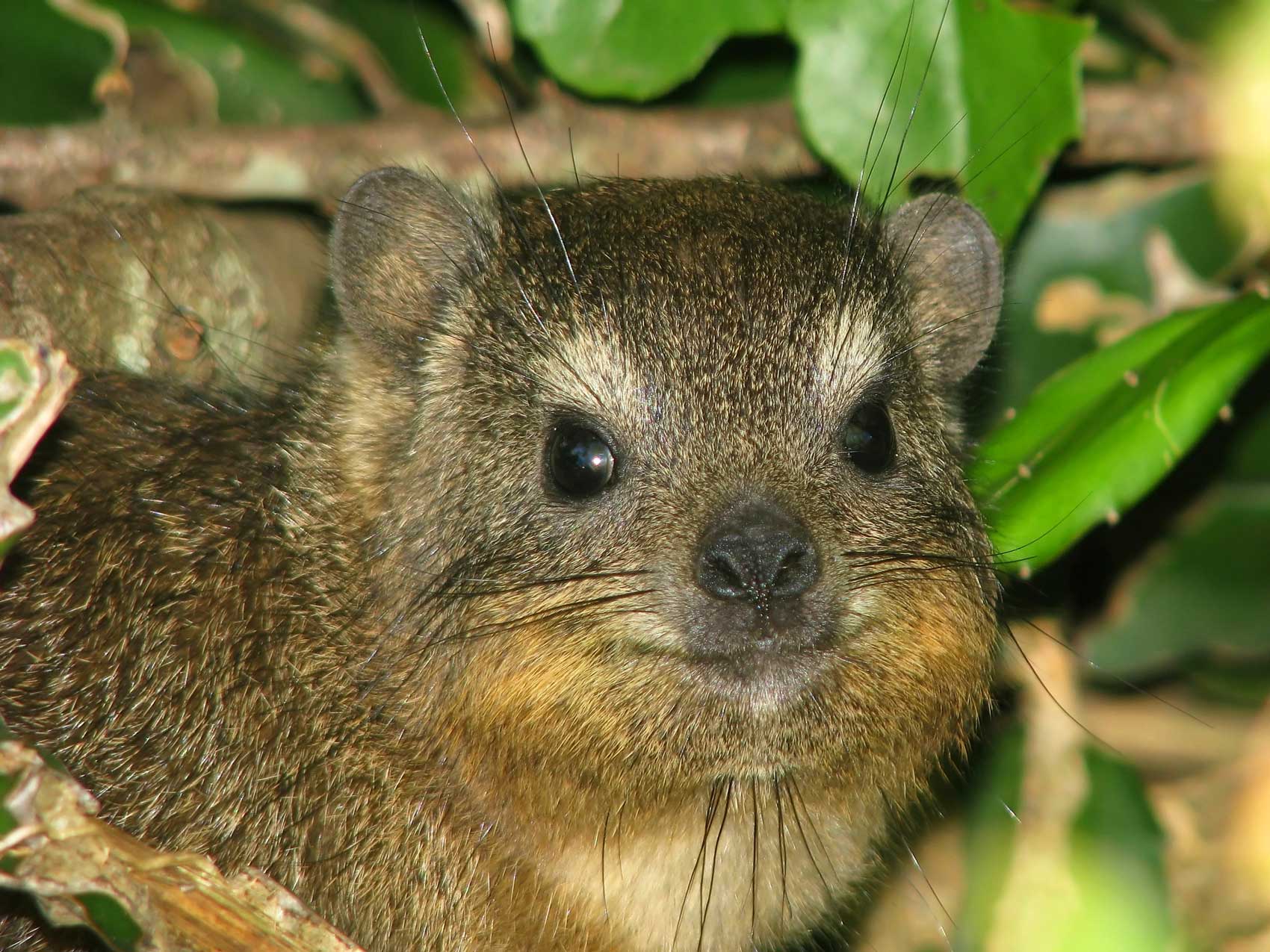
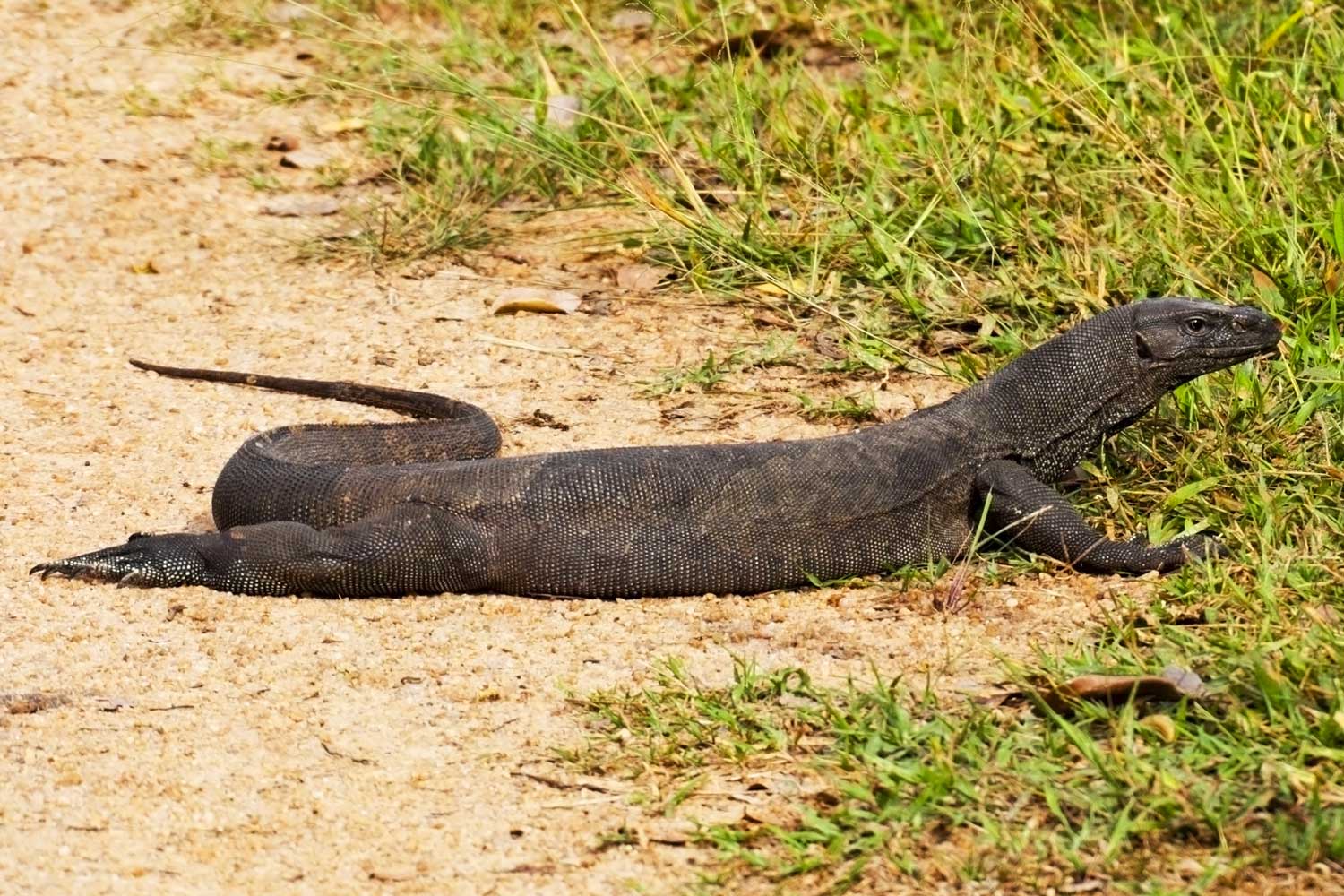
Monitor Lizards
Monitor lizards can be found throughout Zanzibar, this species of lizard is known for its large size. They can be found throughout America as well as Africa, and there are currently around 79 species of monitor lizards across the world.
Most of the monitor lizards that you will find within Zanzibar are of the savanna monitor variety. This smaller species of monitor generally don’t get much larger than 5 feet, and usually they are around 2.5 feet. Most of the savanna monitors in this area feed on mollusks, crickets and other insects. They can be kept in captivity, and this is partially what threatens their numbers. Monitor lizards are often captured as local pets or even shipped out as pets. Currently this species is imported to the US for live animal trade as well as for their skins in other part of the world. Realistically, the only threat to this animal is the pet trade as well as the sale of its leather and meat. Hundreds of thousands of these animals have been exported over the years, and monitor lizards in the wild are quickly becoming an endangered species in Zanzibar.
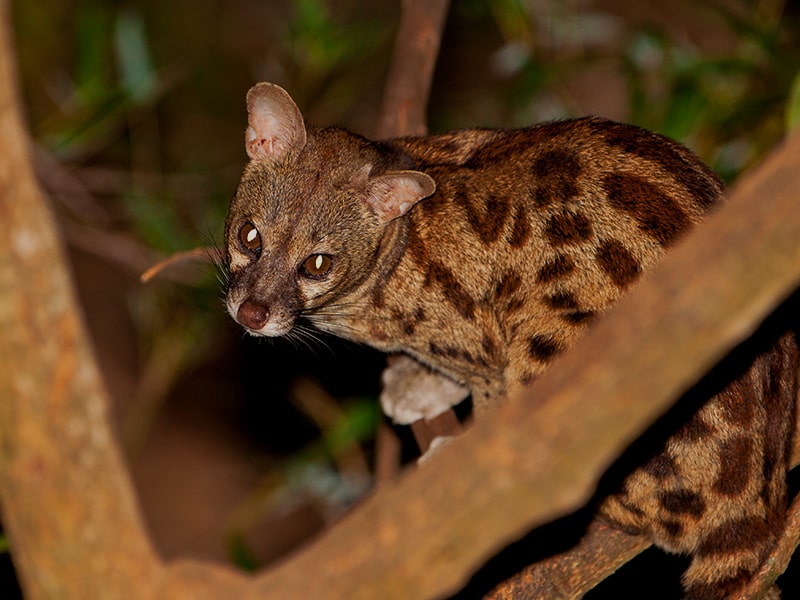
Zanzibar Servaline Genet
The Zanzibar servaline genet is only found on Unguja Island and throughout Tanzania. Zoologists only recently discovered this animal and it took until 2003 to photograph servaline genets near the Jozani Chwaka Bay National Park using camera traps. This species requires groundwater forest to survive, and genets are currently only living in a protected area because much of their habitat has been destroyed when forests were cut down to make way for agricultural activities.
They somewhat resemble cats with their long, thin bodies and extra long ringed tails. Spotting one of these nocturnal and extremely solitary animals is very difficult. They are small carnivores feeding on insects and very small mammals. This species has been evolving in this area since the Ice Age, and its closest relatives are the servaline genet species that can be found in central Africa. The central African variety does not have the same striking colors or body length as the Zanzibar variety. As these animals are an extremely rare sight, so it is quite difficult to capture them without a camera trap. As lowland forests continues to dwindle it may only be a matter of time before we won’t be able to spot these animals in the wild anymore.

